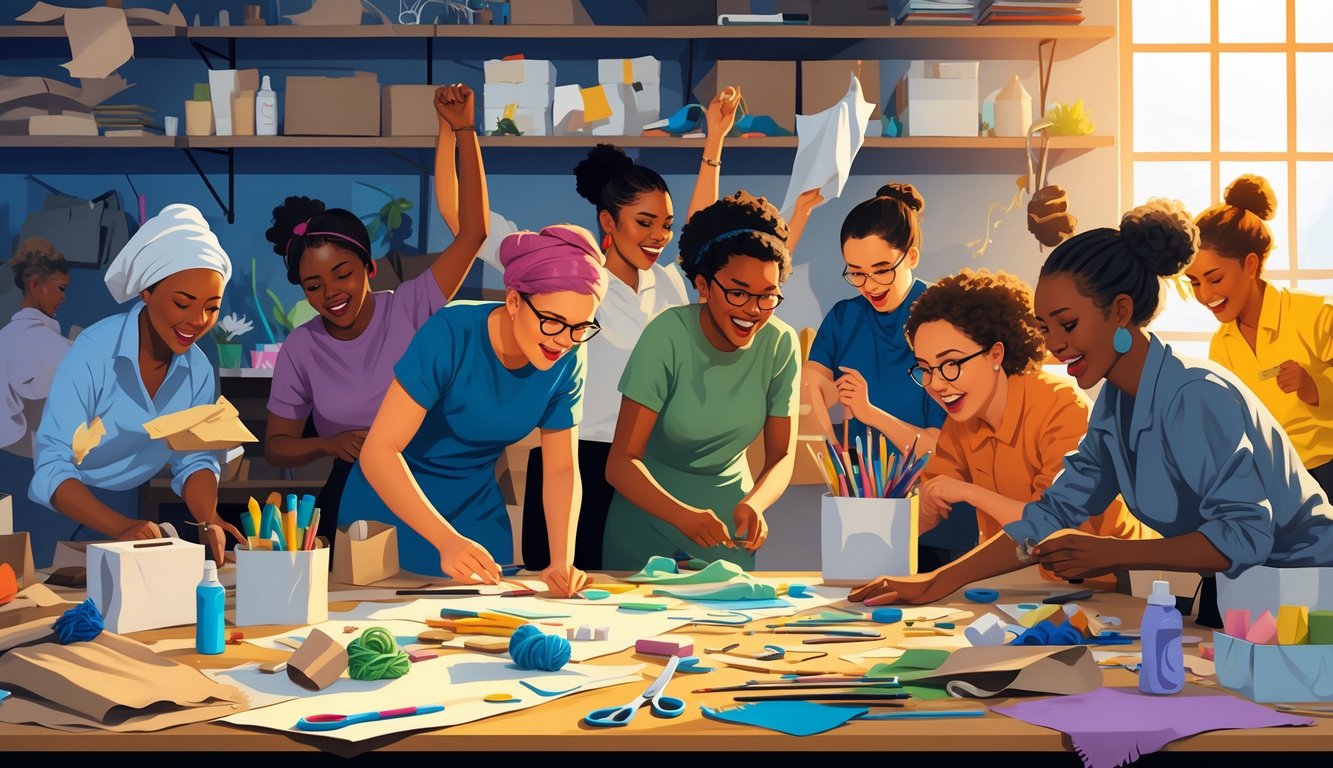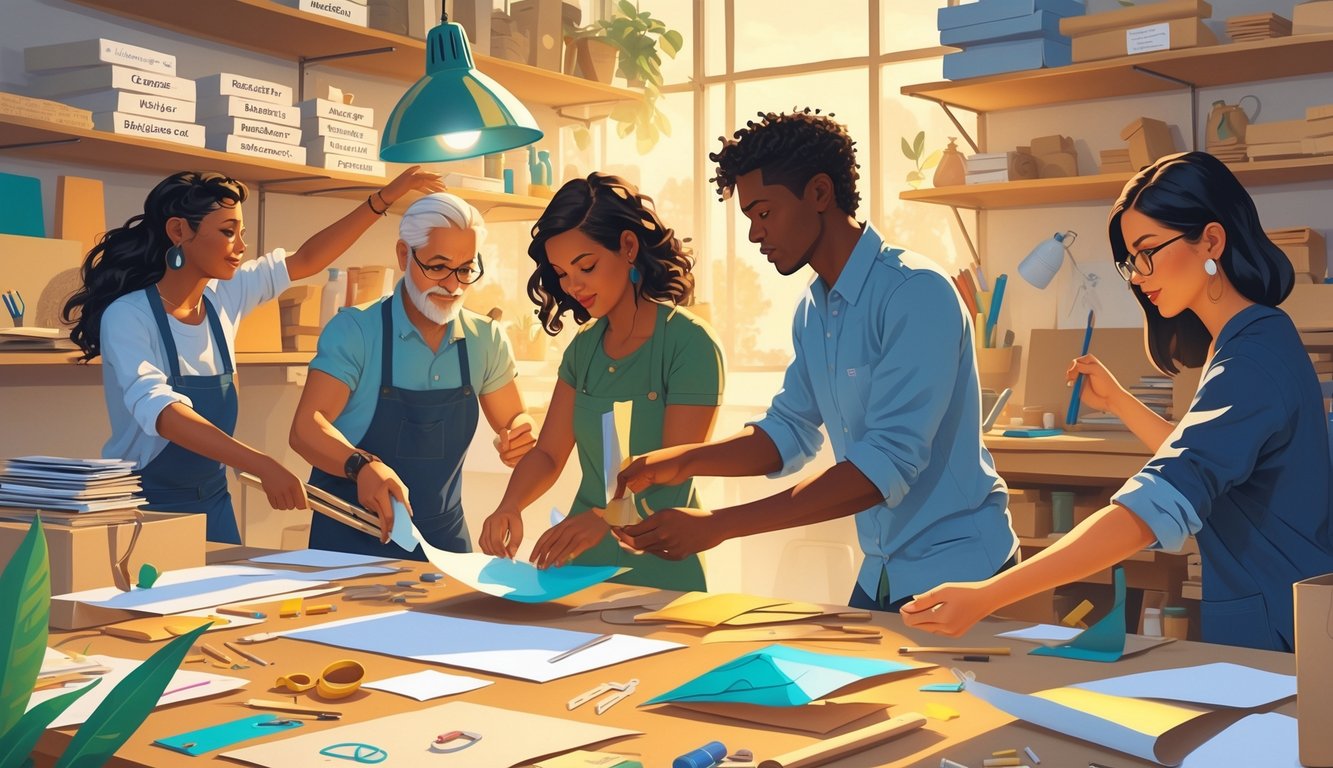
Okay, so, here’s the thing: I’m still mildly embarrassed at how many times a day I check for restocks on organic cotton thread. Twelve? Fourteen? I lost count, but there’s a bot now, which is both helpful and kind of dystopian. Honestly, the material shortage situation is pure chaos. I’m paying double for bamboo-acrylic yarn, and at this point, I’d probably barter my lunch for a bag of vintage buttons. It’s 2025, and even the “boring” supplies—yarn, needles, fabric—are still stuck in limbo. If you think I’m exaggerating, just look at this supply chain mess in crafts. I don’t know why I expect the warehouse to magically restock. It’s like waiting for my houseplants to water themselves.
But what’s really making me twitchy? Every group chat, every Discord, every sewing bee—it’s the same: “Anyone got a hemp canvas plug?” “Did your recycled felt from Latvia actually arrive?” (Spoiler: probably not.) Supposedly, the AI server boom is sucking up all sorts of weirdly essential materials—fast fashion, data centers, whatever—so crafters like me get the leftovers. Raw material shortages in manufacturing are apparently a thing, but it feels like nobody really knows what’s going on. Polyester is out, survival mode is in. I’m swapping leads for upcycled denim, comparing plant-based fiber blends, and, yes, ironing wood pulp cellulose that smells like wet socks. Who knew?
Now, instead of picking thread colors, I’m googling “eco-friendly alternatives to linen” and cross-referencing conversion charts for stuff I didn’t even know existed. Banana fiber? Pineapple yarn? I tried them. Zero for drape, ten for bragging rights, postage costs somewhere between “absurd” and “I could have flown there myself.” Crafting in 2025 feels less like a hobby and more like a slow-motion, resource-hoarding competition. Is this fun? I can’t tell anymore.
Why Material Shortages Are Impacting Crafters
Try making a patchwork tote when even the basic stuff—random interfacing, a pigment you never thought about—just vanishes overnight. I find out the hard way every time I try to restock. Global supply chains hiccup, and suddenly, paint or premium cotton yarn is stuck in a warehouse somewhere, prices spike, and I’m left improvising with whatever’s left over. It’s not “innovation,” it’s desperation.
Key Causes Behind Recent Material Shortages
It always starts with a rumor—someone swears they can’t find titanium dioxide or basic glue, and then, bam, every craft store in town has “Out of Stock” taped to the shelves. Pigments, metals, fibers—gone. Manufacturers stockpile like it’s the apocalypse, not “strategic planning.” I’m getting outbid by companies buying glue by the literal ton.
Suppliers blame shipping, costs, quotas, “demand”—they always have an excuse, and they always shrug. Meanwhile, materials pile up in warehouses halfway across the world, but good luck getting them through a port. Finding “alternatives” like cork or plant-based resin isn’t trendy, it’s just what you do when you’ve got no other choice.
How Supply Chain Disruptions Affect the Crafting World
So, picture this: I see “back in stock soon” on a website. Weeks go by. Turns out, there’s a shipping container full of art paper just floating out at sea, and nobody’s unloading it. Backlog for months, according to this industry report. I plan a project, then scrap the plan, then maybe plan again, then give up.
Suddenly, Japanese felt or shimmer pigment becomes a flex. I start hoarding—not because I’m greedy, but because if I wait, I’ll be out of luck for months. Sometimes I gamble on a shipment and lose: old prices are gone, new prices are wild, and I’m still out of stock. Who actually understands this? Probably not the port officials, and definitely not me.
The Role of Global Events in Material Availability
People love to blame covid-19, but it’s not just that. Labor strikes, tariffs, random port closures, hurricanes, customs—take your pick. Every time I think things are calming down, something else breaks. Manufacturers who barely survived 2022 start stockpiling again. I’ve lost track of what event caused what shortage. Sometimes it’s a storm, sometimes it’s bureaucracy.
Every time there’s a headline about bottlenecks, my anxiety spikes—mostly for my tiny stash of floss. Turns out, I’m competing with massive factories for the same boring basics. One Thursday, an ocean traffic jam in Asia eats up all the solvents, and I’m left swapping brands mid-project, hoping nobody notices. And every time, people act surprised. Why?
The Alternative Materials Craze

Some days it’s receipts and spreadsheets, other days I’m ranking metals I barely understand while suppliers send me emails with “URGENT PRICE INCREASE” in the subject. Tin, nickel, whatever—I’m not just improvising, I’m rewriting my whole project list every time another material runs out.
Why Tin and Nickel Are Gaining Popularity
Brass disappeared last quarter (did anyone see that coming?), so now everyone’s using tin sheets and nickel hardware. Tin is light, sure, but finding a supplier who isn’t making things up as they go? Impossible.
Nickel—I tried using it for hinges, and honestly, it looked okay, but my friend swore the alloy would survive the monsoon. Did it? Not sure. Supposedly, demand for tin and nickel is up 32% (maybe more, if you believe UK Construction Media), mostly because electrical stuff and supply chain panic.
I overheard someone at a trade show say Japan is making building materials from food waste. Fruit peel furniture, apparently. imm cologne magazine covered it. I’m not making this up.
Benefits and Challenges of Using Alternative Materials
I thought using tin was a fluke, but suddenly suppliers are selling recycled printer metal as “premium.” Sure, it’s cheap. Crafters love it because nobody can afford copper or steel. But switching to tin or nickel? Now I’m relearning soldering, and explaining to customers why their “brass” is actually something else.
It’s not all upside. Tin rusts less but dents if you look at it funny. Nickel? The price jumps around, and sometimes it’s magnetic, sometimes not—try explaining that on Etsy. Someone at Sika’s R&D told me recycled alloys fail 1 in 8 hardness tests. I didn’t want to know that after I’d packed up a dozen prototypes.
Testing, compliance, even just finding a replacement—none of it’s straightforward. Marketing says “eco-friendly,” but my reality is more like “triple-check everything or get stuck with returns and scrap.”



